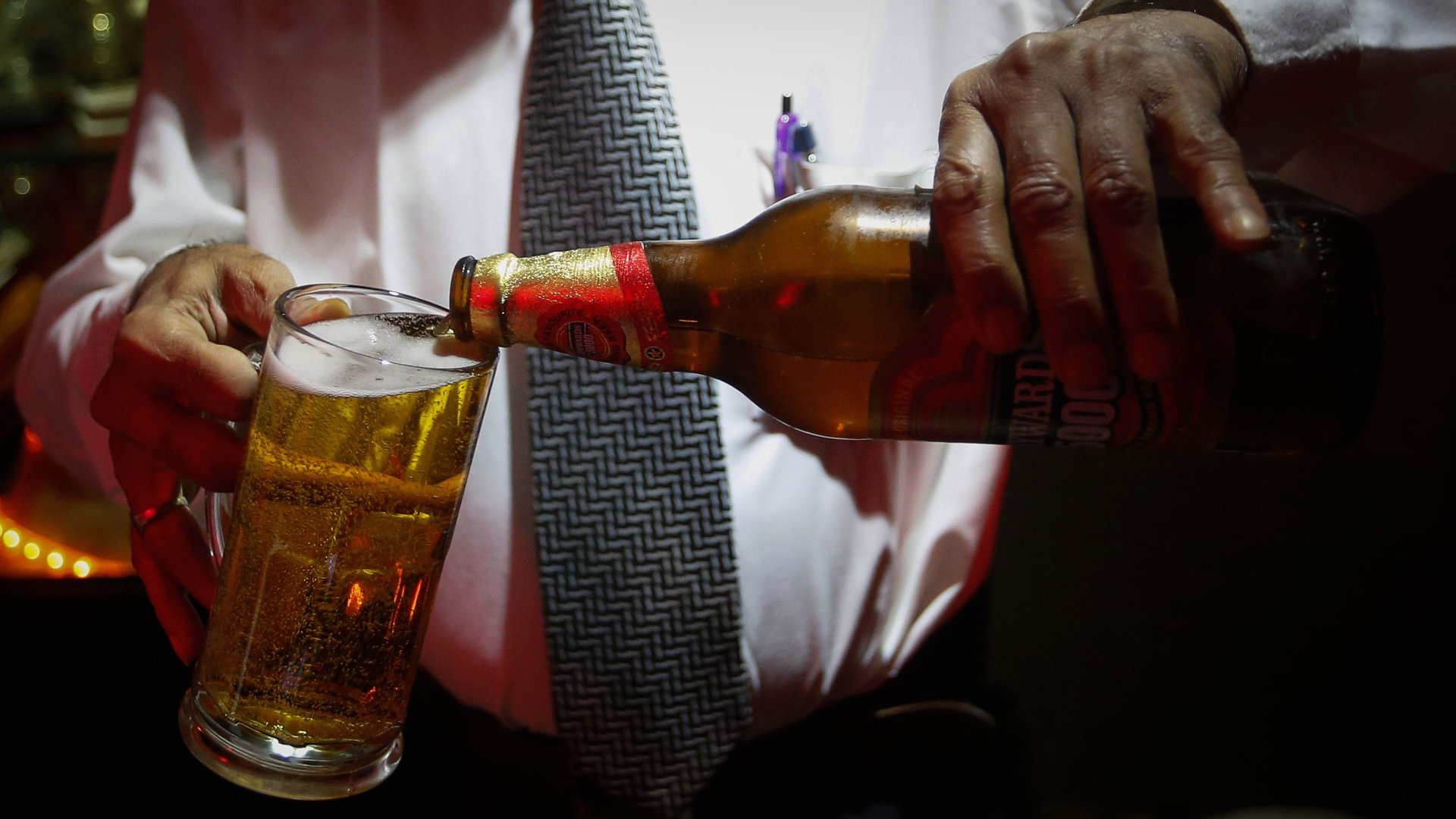India celebrates democracy like all its other festivals—by banning alcohol
“Imposition of order for DRY-DAY,” reads item 133 in the Indian election commission’s long planning list.


“Imposition of order for DRY-DAY,” reads item 133 in the Indian election commission’s long planning list.
In India, a “dry day” is when the government prohibits the sale and public consumption of alcohol. Though it may not sound much fun, dry days tend to fall on national holidays—that is, in times of celebration. Gandhi Jayanti (Mahatma Gandhi’s birthday, Oct. 02) and Independence Day (Aug. 15), besides other religious or folk celebrations like Holi, are among them, either locally, state-wise, or all over the country.
Since elections are “a festival of democracy,” they, too, go dry.
Over the next two months, 15 dry days will be observed across the country in different phases. The election commission imposes a ban on alcohol sale 48 hours ahead of the closing of polls in the voting constituency, which means large states such as Uttar Pradesh altogether have up to 14 dry days through the election. Additionally, counting day (May 23) is also dry.
Important national days and alcohol just don’t mix well in India, and limiting alcohol consumption has been part of a prohibition campaign at least as old as independence: Amongst his many ascetic preferences, Gandhi counted a disdain of alcohol, and he campaigned fervently to impose its ban across the country.
Like vegetarianism, not drinking alcohol is considered a sign of purity, and drinking remains altogether banned in several Indian states, although bootleg access to alcohol is often very easy. India used to once be an overwhelmingly non-drinking country. However, according to the OECD, alcohol consumption has gone up nearly 330% since 1960.
The World Health Organization (WHO) paints an even more dramatic picture, putting the yearly per capita alcohol consumption in India at 5.7 liters, with up to 5% Indian men suffering from alcoholism.
Governments of all political leanings have imposed—and repealed—prohibition through the country, though it’s not just authorities who seek to restrict drinking. For long, a significant section of women and their advocates have sought such a ban. A look at the gender divide in alcohol consumption would explain why:
Not only do men form an overwhelming majority of alcohol drinkers, but there is also a direct link between drinking and violence of various kinds—political, criminal, and domestic. This is particularly important for women: Studies have shown that states enforcing stronger control over alcohol distribution and consumption generally register lower levels of gender violence, and lowering the threat of aggression is important to encourage women to vote.
Further, alcohol is often used to bribe voters, particularly in rural areas where consumption is higher and poverty more widespread: The latest data shows that liquor worth Rs192.067 crore (about $28 million) intended for bribes has been seized so far by the election commission. Limiting access to alcohol in the hours leading up to polling is an attempt to curb the impact of free drinks on representation.
Understandably, the alcohol industry isn’t a fan of elections: Projections show major alcohol companies bracing for a slide in sale during elections—and that’s not all. Excise and police officers are an integral part of liquor-making in India, as they are required to control, oversee, and approve various stages of the business, from opening and closing factories to checking on deliveries and sales. These officials may be seconded to help in the conduct of elections, leading to delays and lower output.
Read Quartz’s coverage of the 2019 Indian general election here.